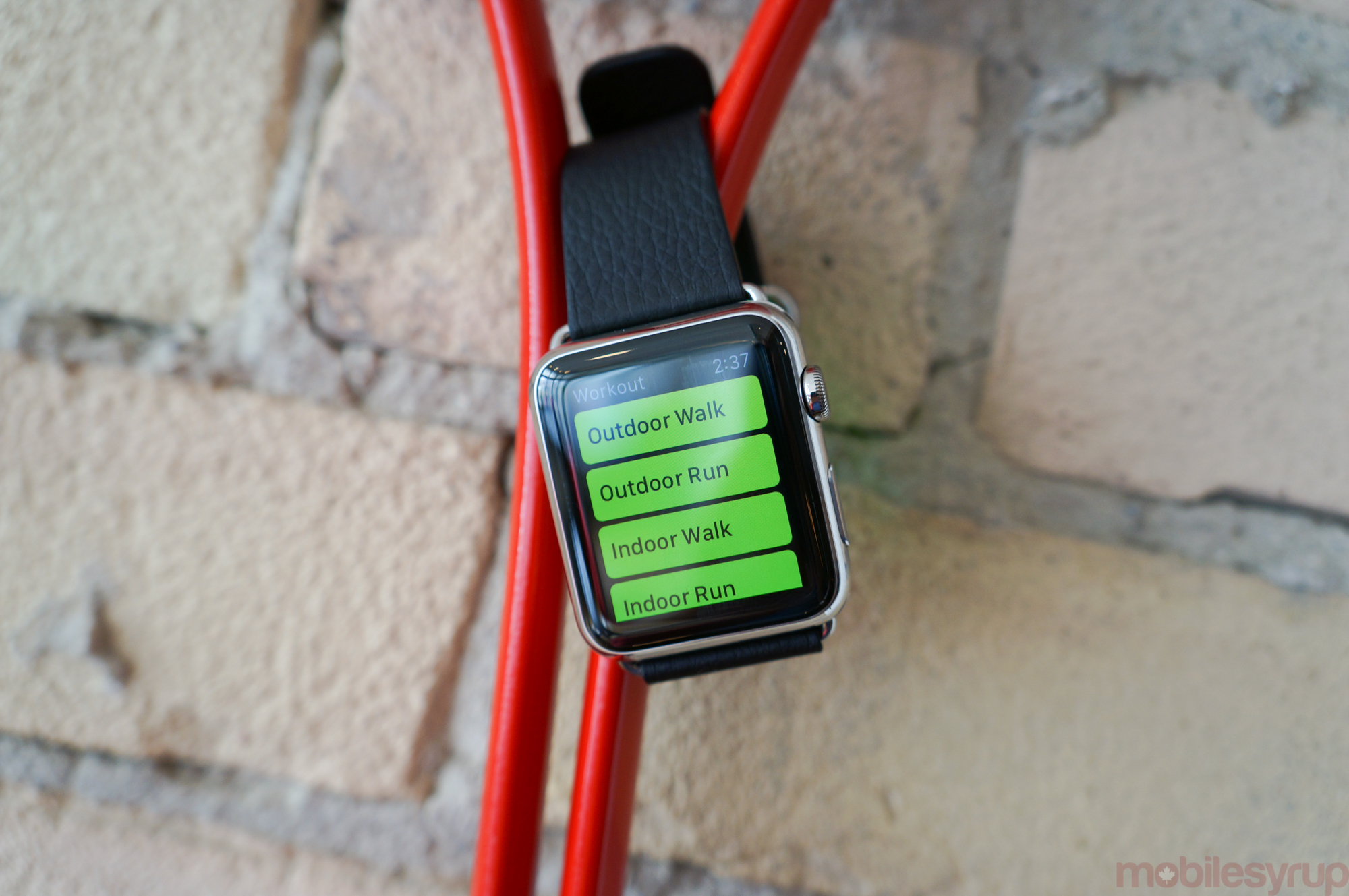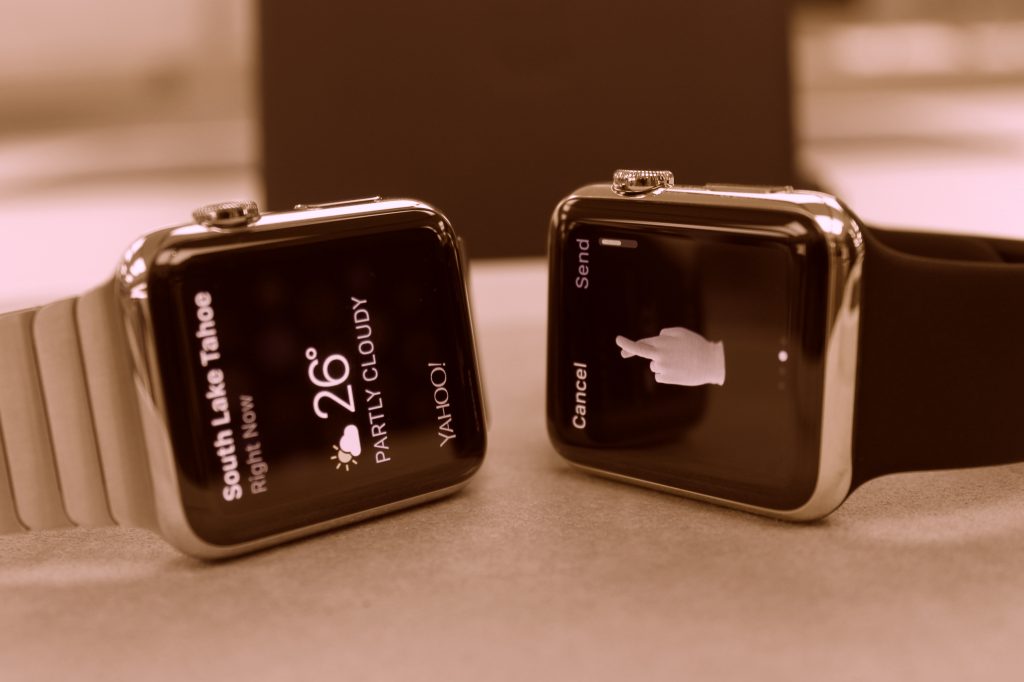
Two years ago I unboxed my first smartwatch. I was a backer of Pebble’s original Kickstarter campaign – which set a record in 2012 by raising $10 million dollars – and I still remember my excitement when the long rectangular box (a much cruder version of the one I recently got from Apple) came in the mail. Since then I’ve continued to wear some type of smartwatch on my wrist, from smaller startups like Martian to devices from Samsung, Sony, LG and Motorola. Right now, though, I am rocking the Apple Watch.
During this time, the smartwatch space has seen accelerated change and enormous growth. Samsung has pushed out six devices and a brand new operating system for its wearable platform, while Android Wear and Pebble have also continued to iterate on both the hardware and software side. Of course with Apple now in the race, we are seeing even more interest. But despite the changes in technology, this wearable category has continued to be a source of much debate over its necessity, especially since it shares many overlapping features with our smartphones – and in most cases, is dependent on such devices to work. Unclear on what exactly one is meant to do, people are still not convinced they need a smartwatch.
Looking back: received my @Pebble Kickstarter #smartwatch 2 years ago today #tbt #WearableTech pic.twitter.com/wVOVJ6BwUb
— Tom Emrich (@tomemrich) May 14, 2015
Compared to other wearable tech on the market, the smartwatch is having a difficult time in demonstrating its value, especially at the price point many demand. For $50, sensor-equipped fitness bands track your activity with the promise of bettering your health, and for as little as a night for two at the movies, smartphone-powered VR headsets deliver an immersive gaming and entertainment experience that will blow your socks off. But at $300 to $20,000, the smartwatch is either being marketed as a connected fashion device or as a way to give you wrist access to notifications already present on your smartphone, so why bother? What do smartwatches give us that we don’t already have?
Unclear on what exactly it is meant to do, people are still not convinced they need a smartwatch.
I have come to understand that the value of a smartwatch isn’t in gaining something new, as much as it is changing the way we do something we already have. The smartwatch wants to rewire our digital behavior, especially our smartphone use. It wants to be the cure for our digital addiction, and like any good addict we are going to fight it until it finally wins us over. Let me explain.
There is no question that for most people, the smartphone is the most powerful tool we have. This mobile supercomputer has changed the way we live, and is the driving force behind many new technologies, including wearable tech. As essential life devices, our smartphones have made us smarter, more productive and more connected to everyone, anywhere in the world at any time. But as much as smartphones have enhanced our lives, they have also become digital distractions that impede us from truly living them.
Every second we spend in the digital world checking our Twitter feed, uploading to Instagram or browsing through Flipboard is a second lost here in the physical one. Although we like to think we are good multitaskers, human beings aren’t built to be in two places at once, so checking our phone at dinner really means that we are checked out. It’s not that spending time in the digital world is a bad thing. In fact, I am a big believer that the life we have online is meaningful. But it’s the divide. Toggling between the conversation on Twitter and a conversation with our mom means that both conversations parties lose out, and this is where the problem lies.

What’s worse is that we have lost all control to the device in our hands. We find ourselves checking our phones incessantly to see if there is something we ‘need to do’, and have become like Pavlov’s dog with every chime, immediately responding to the incessant notifications being pushed our way. We are addicted to our smartphones and this digital addiction has actually become a way of life. In fact, it’s often celebrated through followers, fans, badge counts, and the elusive ‘zero inbox.’ It has become so bad that even when we have satisfied all of our notifications, we find ourselves craving more: we head on over to our apps to create new notifications for others to receive to continue the cycle. We just can’t seem to get enough.
Like most addictions, in order to kick it, you swap out one behavior for another hoping that the new one is better for you.
The good news is that the smartwatch isn’t here to add to this digital noise. Unfortunately, it isn’t here to reduce it, either (not now anyway). What it wants to do is help ween us off our smartphone addiction. And like most addictions, in order to kick it, you must swap out one behavior for another hoping that the new one is better for you. The smartwatch accomplishes this by helping triage the notifications we receive, forcing us to be more conscious about the time we spend on our smartphones.
The reason a smartwatch can do this in ways our smartphone cannot is that its interactions are limited, finite and shallow. With a smartphone, you look at it and ask, “What can I do with this?” It offers an infinite opportunity as a consumption device. We are trying to ask the same question to the smartwatch and this is where things break down. You see there is nothing really to ‘do’ with a smartwatch. You won’t find yourself opening apps and holding up your arm to play Candy Crush or scroll through your Twitter feed on #TBT despite the fact that many app developers currently think you will. The smartwatch doesn’t want you to do anything unless there is something for you to do, and you will find that, for the most part, there is nothing for you to do at all. And that is ok (although we don’t want it to be).
When we get a notification on our smartphone, we check it and then often find ourselves opening up Twitter, Instagram, and Periscope to see what is going on when we are done. What should have only taken us seconds quickly turns into minutes. This digital time suck isn’t possible when checking that same notification on a smartwatch. In fact, most interactions on the smartwatch aim to get you off the device rather than trying to engage you further. And that is exactly the point. The smartwatch wants you to quickly tackle that notification and get you back to what you were doing before you saw it. As your notifications are even easier to access on your wrist, it only takes one glance down to decide how important that notification is and then decide to ignore it, tap a button to take action right there on the watch, or consciously decide to pull out your smartphone to do something more extensive.
The smartwatch wants to become the first line of defense against the war on notifications. When you start to incorporate it into your life you’ll find yourself quickly determining which buzzes on your wrist are important enough to deserve your attention and require you to pick up your phone. In fact, this will most likely cause you to go back into your email to flush out the spam in order to better prioritize what’s coming your way to the watch. The smartwatch isn’t trying to replace your smartphone; it’s trying to help you use it wisely and more efficiently so that you either dedicate yourself to a digital moment or focus more on what’s happening in the present moment.
In all this, however, the key word is ‘you’. Right now, the smartwatch isn’t smart enough to prioritize things on your behalf, leaving all of that work on your shoulders. If you don’t manage your notifications before they get to the watch, or even if you do, you’ll find your wrist buzzing like crazy, relying on willpower alone to not look down to get distracted. This is one of the main reasons many smartwatch wearers have abandoned their device. Change itself is hard, but the effort becomes overkill when you ask people to pay for it.
If you watch me and my own smartwatch-smartphone behavior, you’ll see that, although committed, I haven’t fully swallowed the smartwatch pill myself. What’s currently missing is the necessary contextual computing to add a layer of intelligence that makes things easier. When that happens, the smartwatch will become an effective aid for those suffering from smartphone addiction. For now, the smartwatch only works for people willing to do the detox work themselves.
This article originally appeared on our sister site, BetaKit.
MobileSyrup may earn a commission from purchases made via our links, which helps fund the journalism we provide free on our website. These links do not influence our editorial content. Support us here.



